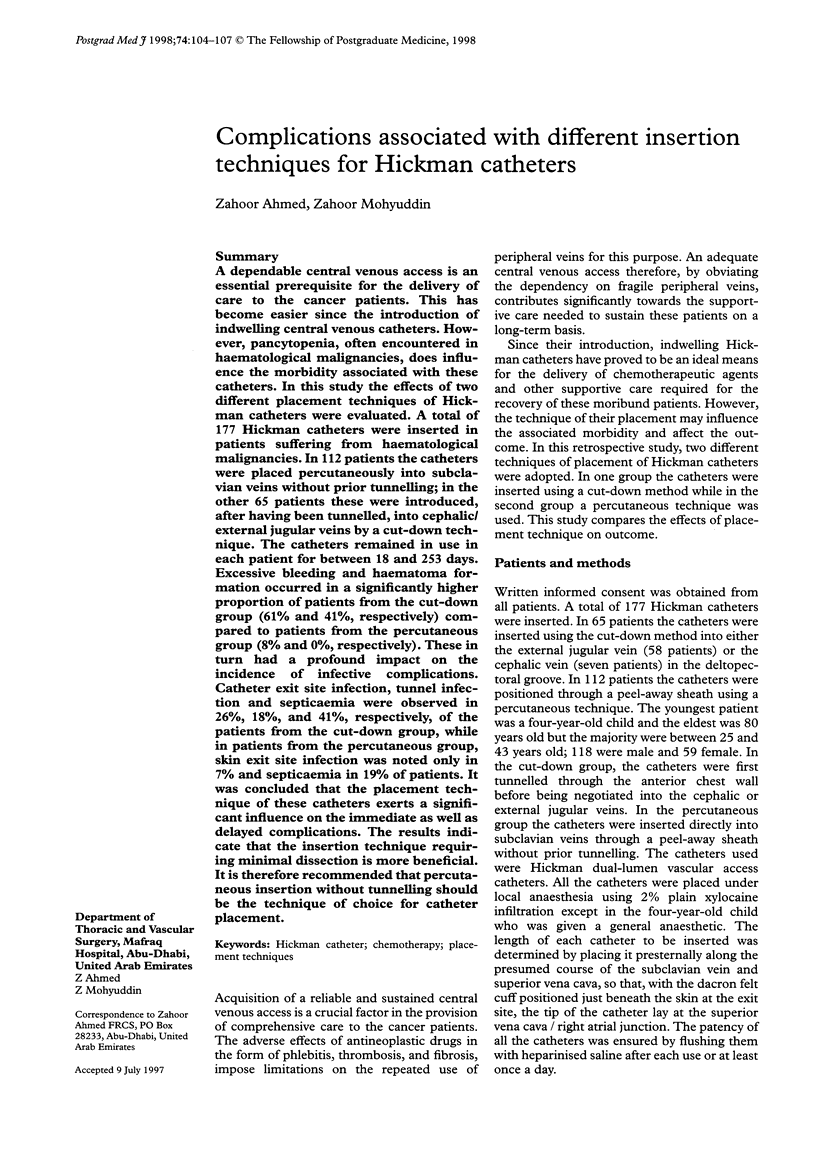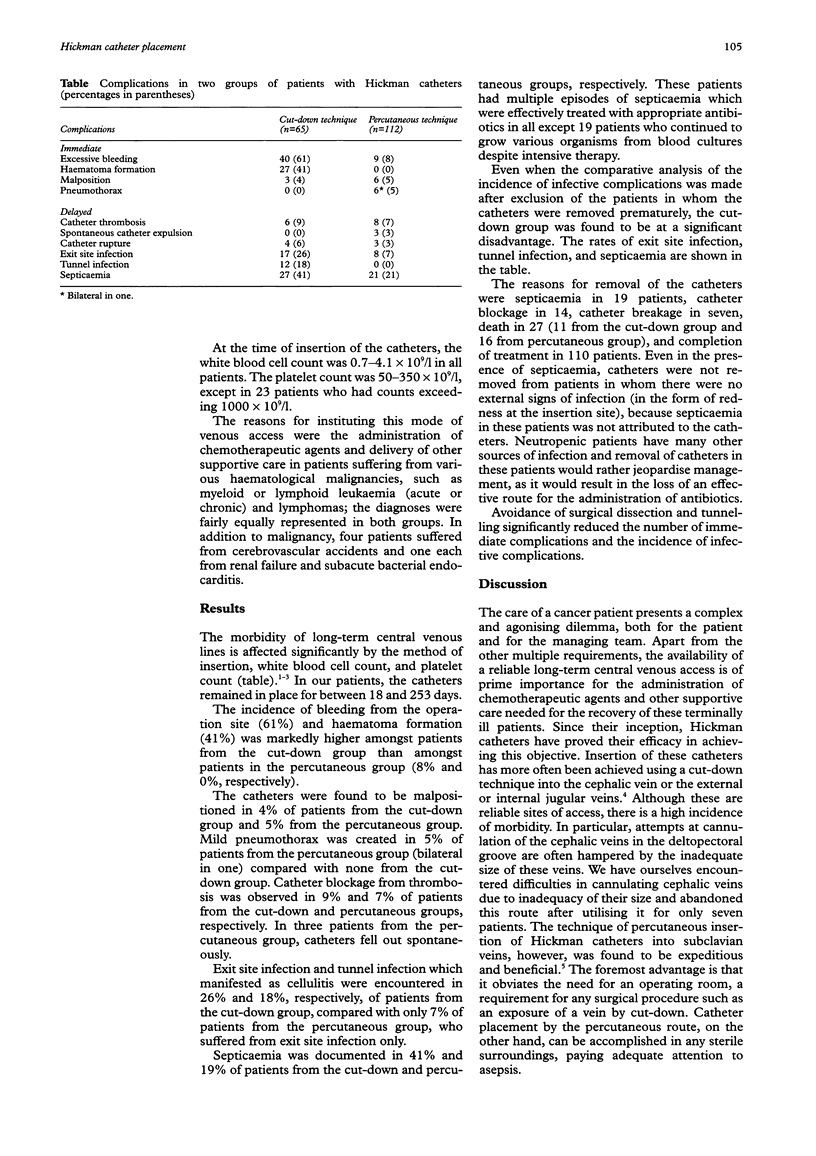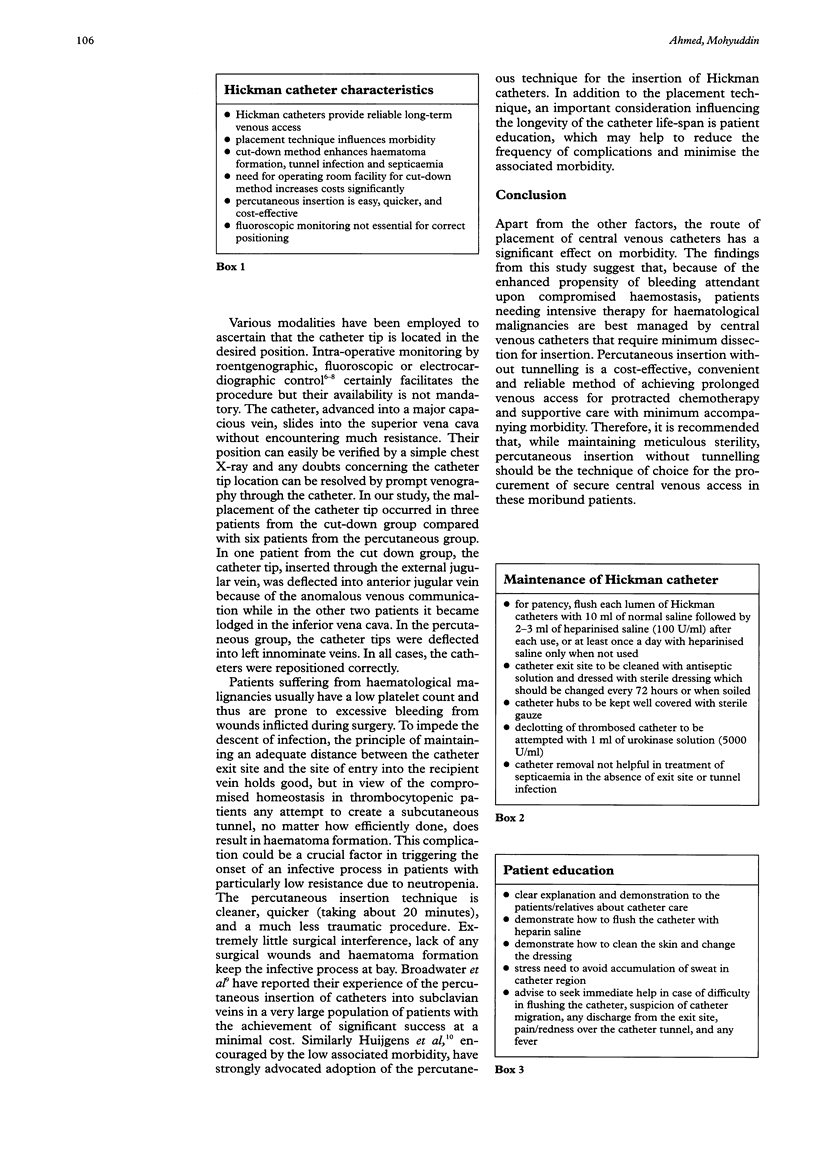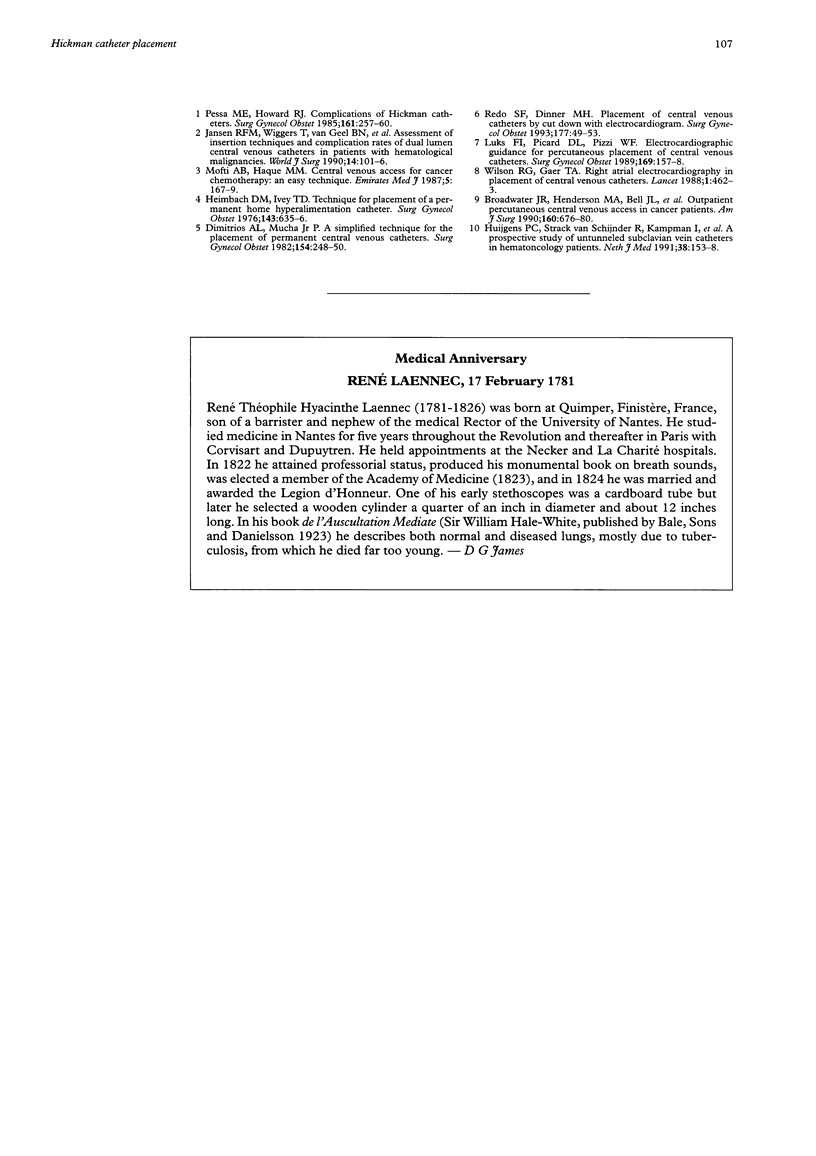Abstract
A dependable central venous access is an essential prerequisite for the delivery of care to the cancer patients. This has become easier since the introduction of indwelling central venous catheters. However, pancytopenia, often encountered in haematological malignancies, does influence the morbidity associated with these catheters. In this study the effects of two different placement techniques of Hickman catheters were evaluated. A total of 177 Hickman catheters were inserted in patients suffering from haematological malignancies. In 112 patients the catheters were placed percutaneously into subclavian veins without prior tunnelling; in the other 65 patients these were introduced, after having been tunnelled, into cephalic/external jugular veins by a cut-down technique. The catheters remained in use in each patient for between 18 and 253 days. Excessive bleeding and haematoma formation occurred in a significantly higher proportion of patients from the cut-down group (61% and 41%, respectively) compared to patients from the percutaneous group (8% and 0%, respectively). These in turn had a profound impact on the incidence of infective complications. Catheter exit site infection, tunnel infection and septicaemia were observed in 26%, 18%, and 41%, respectively, of the patients from the cut-down group, while in patients from the percutaneous group, skin exit site infection was noted only in 7% and septicaemia in 19% of patients. It was concluded that the placement technique of these catheters exerts a significant influence on the immediate as well as delayed complications. The results indicate that the insertion technique requiring minimal dissection is more beneficial. It is therefore recommended that percutaneous insertion without tunnelling should be the technique of choice for catheter placement.
Full text
PDF



Selected References
These references are in PubMed. This may not be the complete list of references from this article.
- Broadwater J. R., Henderson M. A., Bell J. L., Edwards M. J., Smith G. J., McCready D. R., Swanson R. S., Hardy M. E., Shenk R. R., Lawson M. Outpatient percutaneous central venous access in cancer patients. Am J Surg. 1990 Dec;160(6):676–680. doi: 10.1016/s0002-9610(05)80773-1. [DOI] [PubMed] [Google Scholar]
- Huijgens P. C., Strack van Schijndel R., Kampman I., Ossenkoppele G. J., Klomp-Gerringa M., van der Putten E. A prospective study of untunnelled subclavian vein catheters in hematooncology patients. Neth J Med. 1991 Apr;38(3-4):153–158. [PubMed] [Google Scholar]
- Linos D. A., Mucha P., Jr A simplified technique for the placement of permanent central venous catheters. Surg Gynecol Obstet. 1982 Feb;154(2):248–250. [PubMed] [Google Scholar]
- Luks F. I., Picard D. L., Pizzi W. F. Electrocardiographic guidance for percutaneous placement of central venous catheters. Surg Gynecol Obstet. 1989 Aug;169(2):157–158. [PubMed] [Google Scholar]
- Pessa M. E., Howard R. J. Complications of Hickman-Broviac catheters. Surg Gynecol Obstet. 1985 Sep;161(3):257–260. [PubMed] [Google Scholar]
- Redo S. F., Dinner M. H. Placement of central venous catheters by cut-down with electrocardiogram positioning. Surg Gynecol Obstet. 1993 Jul;177(1):49–53. [PubMed] [Google Scholar]
- Wilson R. G., Gaer J. A. Right atrial electrocardiography in placement of central venous catheters. Lancet. 1988 Feb 27;1(8583):462–463. doi: 10.1016/s0140-6736(88)91247-0. [DOI] [PubMed] [Google Scholar]


